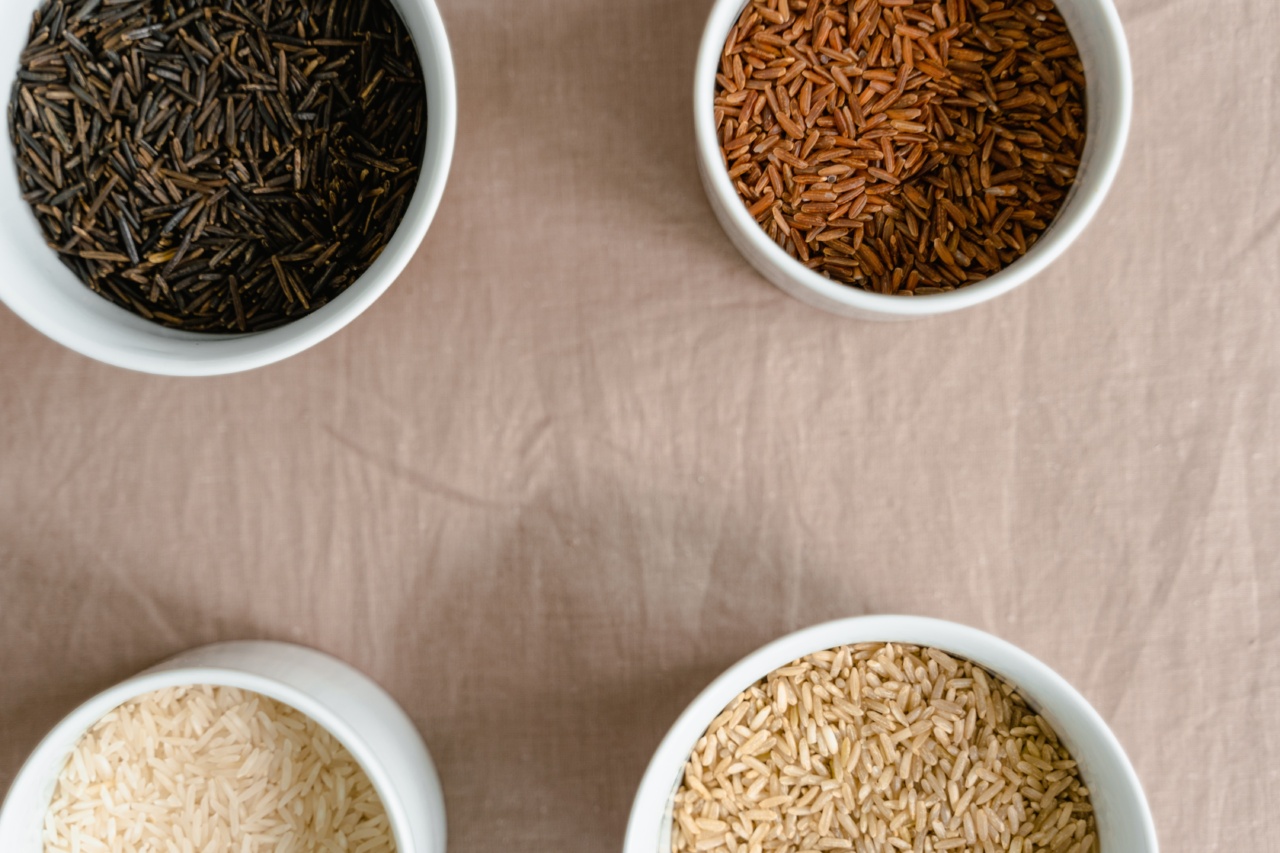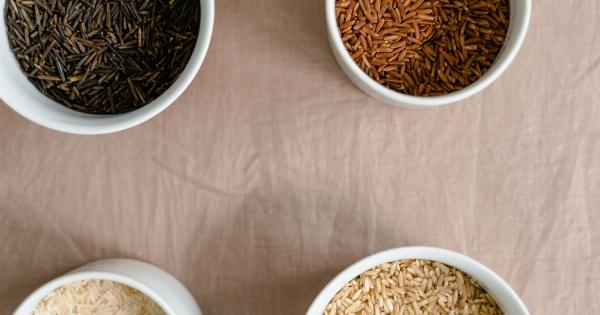Rice is a staple food for millions of people around the world. It is a versatile grain that can be cooked in various ways and enjoyed as a side dish or the main course.
When it comes to choosing the type of rice, the most common options are white and brown rice. Both varieties have their unique characteristics and nutritional profiles.
The Difference between White and Brown Rice
White rice is the most processed form of rice. During the milling process, the outer husk, bran, and germ are removed, leaving behind only the starchy endosperm.
This process gives white rice a longer shelf life and a milder flavor compared to brown rice.
In contrast, brown rice is the whole grain form of rice. It retains the outer bran layer, germ, and endosperm, making it more nutritious and fibrous. The bran layer gives brown rice its characteristic nutty flavor and chewy texture.
Due to its minimal processing, brown rice has a shorter shelf life and may require longer cooking times.
Nutritional Comparison
When it comes to nutritional content, brown rice is the clear winner. It contains more fiber, vitamins, minerals, and antioxidants compared to white rice.
White rice, on the other hand, is lower in fiber and certain nutrients due to the removal of the bran and germ layers.
Fiber Content
One of the main differences between white and brown rice is their fiber content. Fiber is essential for maintaining digestive health and preventing constipation. Brown rice contains significantly more fiber than its white counterpart.
A cup of cooked brown rice provides about 3.5 grams of fiber, while the same amount of white rice only contains approximately 0.6 grams.
Nutrient Profile
Brown rice is also richer in vitamins and minerals compared to white rice. It contains higher amounts of B vitamins, such as thiamin, riboflavin, and niacin.
These vitamins play a crucial role in energy production, brain function, and maintaining a healthy nervous system. Additionally, brown rice contains more minerals like magnesium, manganese, and selenium, which are essential for various bodily functions.
On the other hand, white rice is often fortified with nutrients, such as iron and B vitamins, during the manufacturing process. However, the added nutrients may not fully compensate for the loss of natural nutrients during processing.
Glycemic Index and Blood Sugar Control
The glycemic index (GI) is a measure of how quickly a food raises blood sugar levels after consumption.
Foods with a high GI are rapidly digested and cause a sharp spike in blood sugar levels, while low GI foods are digested more slowly, resulting in a gradual rise in blood sugar.
Brown rice has a lower GI than white rice, meaning it causes a slower and steadier increase in blood sugar levels. This is primarily attributed to its higher fiber content, which slows down the digestion and absorption of carbohydrates.
Therefore, brown rice is considered a better option for individuals with diabetes or those who want to manage their blood sugar levels.
Weight Management
Due to its higher fiber content, brown rice may also be beneficial for weight management. Fiber helps increase satiety and reduce appetite, which can aid in weight loss efforts.
Additionally, the lower GI of brown rice prevents blood sugar spikes, which can lead to cravings and overeating.
On the other hand, white rice is more calorie-dense and has a higher glycemic index, which may contribute to weight gain if consumed in large quantities or paired with high-fat or high-sugar foods.
Food Safety Concerns
Another thing to consider when choosing between white and brown rice is food safety. Brown rice has been found to contain slightly higher levels of arsenic compared to white rice.
Arsenic is a naturally occurring element that can be harmful to health in high amounts. However, the risk of arsenic contamination can be minimized by rinsing brown rice thoroughly before cooking and choosing varieties known to have lower arsenic levels.
Cooking and Preparation
Cooking times and methods may also differ between white and brown rice. White rice usually cooks faster and requires less water compared to brown rice.
However, brown rice’s longer cooking time can be reduced by soaking it in water for a few hours before cooking. This helps soften the grains and shorten the overall cooking time.
Taste and Texture
White and brown rice have distinct tastes and textures. White rice has a milder flavor and a softer texture, making it a versatile option that pairs well with a variety of dishes.
Brown rice, on the other hand, has a nuttier flavor and a chewier texture due to the presence of the bran layer. Some people appreciate the heartier taste and texture of brown rice, while others prefer the more delicate nature of white rice.
Conclusion
When it comes to choosing between white and brown rice, both types have their advantages and considerations. Brown rice is nutritionally superior, offering more fiber, vitamins, minerals, and antioxidants.
It has a lower glycemic index, making it a better option for blood sugar control and weight management. However, white rice has a longer shelf life, milder flavor, and softer texture, which may appeal to certain palates or recipes.
In the end, the choice between white and brown rice depends on personal preferences, dietary needs, and health goals.
Incorporating a variety of grains in your diet, including both white and brown rice, can provide a well-rounded nutritional profile and enjoyment in your meals.





























